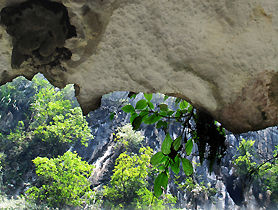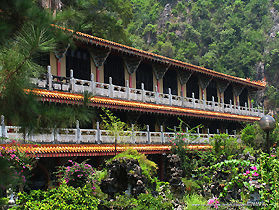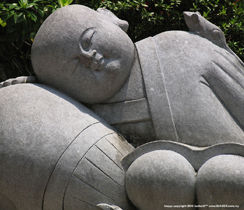 |
Along with Batu Cave in Kuala Lumpur, San Bao Dong cave Buddhist temple and the accompanying caves temples in Ipoh ("Ba Loh", an old favorite name in Cantonese) are probably one of the few most famous religious temple locations in Malaysia. Strangely, when I asked a gentleman at the counter who sells joss sticks and others, he said the managing Monk was not entirely too keen on the issue of tracing the origin and history of San Bao Dong. All I can gathered from some old folks was, it was probably built in or earlier than 1887 which coincides with the neighboring Nan Tian Tong which recently celebrated it 119 years history. |
| | Index
Page | ----
>>> Page
One | Page Two
| Page Three | | San Bao Dong Buddhist Cave Temple | Nan Tian Dong Taoist Cave Temple | Ling Xian Yan Buddhist Cave Temple | Pi-Li Dong (Perak Cave) Buddhist Cave Temple | Other Buddhist Cave Temples in Ipoh (summary page); IPOH CAVE TEMPLES INDEX PAGE | BACK | Main Index page of Thai Amulets/Pendants |
|
|
BACK |
Credit: To all the good people who have contributed their own experience, resources or those who are kind enough in granting us the permission to use their images that appeared on this site. Note: Certain content and images appeared on this site were taken by using a Canon PowerShot Pro-1 digital camera. Some materials appeared on this site were scanned from some leaflets, brochures or publications published by Wat Pak Nam and/or contribution from surfers who claimed originality of their work for educational purposes. The creator of the site will not be responsible for any discrepancies that may arise from such dispute except rectifying |




